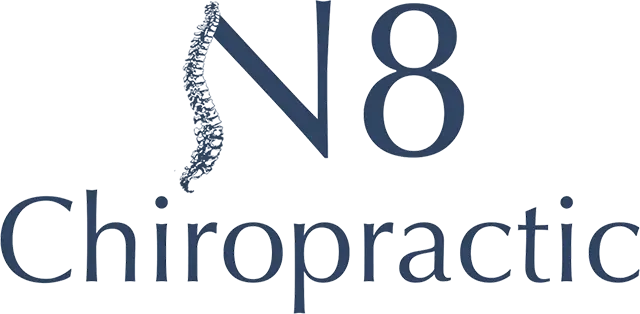Whiplash – Neck Pain After an Injury
Whiplash is a neck injury due to forceful, rapid back-and-forth movement of the neck, like the cracking of a whip.
Whiplash is commonly caused by rear-end car accidents, but whiplash can also result from sports accidents, physical abuse and other types of traumas, such as a fall. Whiplash may be called a neck sprain or strain, but these terms also include other types of neck injuries.
A person who has suffered a whiplash may feel symptoms lessen after a few weeks, but chronic problems can last for years unless the proper treatment is taken soon after the injury.
Symptoms of whiplash
Signs and symptoms of whiplash:
Signs and symptoms of whiplash often occur within days of the injury.
- Neck pain and stiffness
- Worsening of pain with neck movement
- Loss of range of motion in the neck
- Headaches, most often starting at the base of the skull
- Tenderness or pain in the shoulder, upper back or arms
- Tingling or numbness in the arms
- Fatigue
- Dizziness
Some people also have:
- Blurred vision
- Ringing in the ears (tinnitus)
- Sleep disturbances
- Irritability
- Difficulty concentrating
- Memory problems
- Depression
When to see a doctor for your neck pain
See your doctor if you have any neck pain or other whiplash symptoms after a car accident, sports injury or other traumatic injury. It’s important to get a prompt and accurate diagnosis and to rule out broken bones or other damage that can cause or worsen symptoms. Unfortunately, even low speed impacts can alter the curve of a patient’s neck, causing a reversed curve and make the spinal cord stretch, leading to numbness, pain, or reduced function of the body.
Causes of whiplash injury
A whiplash injury may result from:
- Auto accidents. Rear-end collisions are a major cause of whiplash.
- Physical abuse or assault. Whiplash can occur if you are punched or shaken. It’s one of the injuries seen in shaken baby syndrome.
- Contact sports. Football tackles and other sports-related collisions can sometimes cause whiplash.
Complications from whiplash
Most people who have whiplash feel better within a few weeks and don’t seem to have any lasting effects from the injury. However, some people continue to have pain for several months or years after the injury occurred.
It is difficult to predict how each person with whiplash may recover. In general, you may be more likely to have chronic pain if your first symptoms were intense, started rapidly and included:
- Severe neck pain
- More-limited range of motion
- Pain that spread to the arms
The following risk factors have been linked to a worse outcome:
- Having had whiplash before
- Older age
- Existing low back or neck pain
- A high-speed injury
Diagnosis of your neck injury
Your doctor will ask questions about the event and your symptoms. You also may be asked questions that help your doctor understand how severe your symptoms are and how often they occur. Your doctor will also want to know how well you can perform normal everyday tasks.
Examination
During the exam your doctor will need to touch and move your head, neck and arms. You will be asked to move and perform simple tasks so that your doctor can check the:
- Range of motion in your neck and shoulders
- Degree of motion that causes pain or an increase in pain
- Tenderness in your neck, shoulders or back
- Reflexes, strength and sensation in your limbs
Imaging tests for the injured neck
A whiplash injury isn’t apparent on imaging tests. But your doctor will likely order one or more imaging tests to rule out other conditions that could be making your neck pain worse. Imaging tests include:
- X-rays. Fractures, dislocations or arthritis can be identified by X-rays of the neck taken from many angles.
- Computerized tomography (CT). This special type of X-ray can produce cross-sectional images of bone and show possible bone damage.
- Magnetic resonance imaging (MRI). This imaging test uses radio waves and a magnetic field to produce detailed 3D images. In addition to bone injuries, MRI scans can detect some soft tissue injuries, such as damage to the spinal cord, disks or ligaments.
Preparing for your appointment
If you’ve been in a car accident, you might receive care on the scene or in an emergency room. However, a whiplash injury may not cause symptoms immediately. If you have neck pain and other symptoms after an injury, see your doctor, an urgent care center, or a chiropractor as soon as possible.
Be prepared to describe in detail the event that may have caused your symptoms and to answer the following questions.
- How would you rate your neck pain on a scale of 1 to 10?
- Does movement make the pain worse?
- What other symptoms do you have?
- How long after the event did the symptoms appear?
- Have you had neck pain in the past, or do you experience it regularly?
- Have you tried any medications or other treatments to relieve the pain? If so, what was the effect?
- What medications do you take regularly, including dietary supplements and herbal medicines?
Treatment for whiplash
The goals of whiplash treatment are to:
- Control pain
- Restore normal range of motion in your neck
- Get you back to your normal activities
Soft foam cervical collars were once commonly used for whiplash injuries to hold the neck and head still. However, studies have shown that keeping the neck still for long periods of time can decrease muscle strength and interfere with recovery.
Your treatment plan will depend on the extent of your whiplash injury.
Chiropractic care for neck injury
After a thorough examination and imaging, a Chiropractor may be able to treat whiplash with conservative adjustments. These techniques can be with adjusting tools or by hand, correcting the misalignments of the neck and upper back. By realigning the spine, the pressure will decrease in the joints and will lessen compression of the spinal nerves. This decrease in pressure will allow the muscles of the neck to relax and allow the correct alignment of the neck to be re-established. Chiropractors are an important part of a medical team, and work with other medical doctors. Should you find yourself seeking care for neck pain, we would be happy to evaluate you at our clinic, N8 Family Chiropractic. You can call us at 740-689-0199 or learn more at www.n8familychiropractic.com.
References:
https://www.ncbi.nlm.nih.gov/pmc/articles/PMC2684148/ Current Reviews in Musculoskeletal Medicine. 2008 Mar; 1(1): 65–68. Published online 2007 Nov 6. Whiplash: diagnosis, treatment, and associated injuries
https://pubmed.ncbi.nlm.nih.gov/9383854/ Spine (Phila Pa 1976)1997 Nov 1;22(21):2489-94. Whiplash produces an S-shaped curvature of the neck with hyperextension at lower levels
https://pubmed.ncbi.nlm.nih.gov/27836071/ Journal of Manipulative and Physiological Therapeutics 2016 Oct;39(8):523-564.e27. The Treatment of Neck Pain-Associated Disorders and Whiplash-Associated Disorders: A Clinical Practice Guideline
https://pubmed.ncbi.nlm.nih.gov/26707074/ Spine Journal 2016 Dec;16(12):1598-1630. Are manual therapies, passive physical modalities, or acupuncture effective for the management of patients with whiplash-associated disorders or neck pain and associated disorders? An update of the Bone and Joint Decade Task Force on Neck Pain and Its Associated Disorders by the OPTIMa collaboration
https://pubmed.ncbi.nlm.nih.gov/31870638/ Journal of Manipulative and Physiological Therapeutics 2019 Nov;42(9):635-650. Best-Practice Recommendations for Chiropractic Management of Patients with Neck Pain






